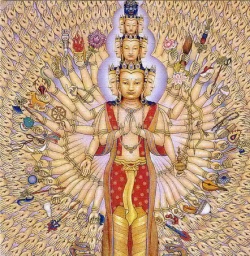Bagha Ba Lama
Bagha Ba Lama
A stele from 1630 refers to Bagha Ba Lama as the junior to Uluk Darhan Nangsu Lama, an important figure in bringing Tibetan Buddhism to the Manchus. Bagha Ba Lama was responsible for seeing through the construction of a stupa to house the relics of Uluk. The building of the stupa had been decreed by the Manchu ruler Nurghaci (who became the first Qing emperor, Taizu) after Uluk’s death in 1622. Uluk had converted Nurghaci to Tibetan Buddhism. Actual construction was delayed, however, due to frequent warfare during Nurghaci’s reign (which ended with his death in 1626), and Uluk’s relics were kept temporarily in a temple in Liao yang converted from the estates of Lieutenant Colonel (cang jiang) Han. In 1630 Bagha Ba Lama convinced Hong Taiji, the second Qing emperor and son of Nurghaci, to begin construction of the stupa in honor of his father’s commitment to the lama and to Tibetan Buddhism.
Tak-Sing Kam argues that because the stele inscription referring to Bagha Ba Lama is not in the Tibetan language, but only Manchu and Chinese that he was probably of Mongolian, not Tibetan, descent. His title appears as Bida, Bide, or Bi Lama in the Mongolian language version of the Qing Veritable Records. Kam notes that the title Bagha Ba, which appears in Manchu sources, should not be confused with the Tibetan title ‘Phags pa. The Mongolian term bagha means “small, young, or lower in rank,” and usually distinguishes a lama from his senior counterpart, as it distinguished Bagha Ba from his master the “Great” (Uluk) Darhan Nangsu Lama (Kam 168n.47, 169).
Source:
Kam, Tak-sing. The dGe-lugs-pa Breakthrough: The Uluk Darxan Nangsu Lama's Mission to the Manchus. Central Asiatic Journal. 44:2 (2000) p. 161-176.
Entry by Stacey Van Vleet, 3/6/07
